Top 5 Grape Varieties of the Loire Valley
The Loire Valley is France’s most diverse winegrowing region. Its richness comes not only from its wide range of appellations and terroirs but also from the sheer variety of its grape varieties.
This diversity also makes the region particularly attractive for those considering vineyard ownership: discover the advantages and opportunities of a vineyard in the Loire Valley.
From Muscadet and Anjou-Saumur to Touraine and Centre-Loire, the region boasts a remarkable total of 24 different grape varieties, both white and red.

Distribution of grape varieties planted in the Loire Valley.
—————————
According to FranceAgriMer (2019), the leading grapes planted in the Loire are:
- Cabernet Franc (25.1%)
- Sauvignon (15.9%)
- Chenin (15.1%)
- Melon de Bourgogne (13.1%)
- Gamay (6.6%)
Together, these five account for 75% of the region’s 55,000 hectares of vineyards.
While the Loire is home to many other grape varieties such as Pinot Noir, Grolleau, and Chardonnay, it is these five emblematic varieties that truly shape the identity and diversity of Loire Valley wines.
Let’s explore what makes each of these grapes so unique and why they are the pride of the Loire.
1. CABERNET FRANC
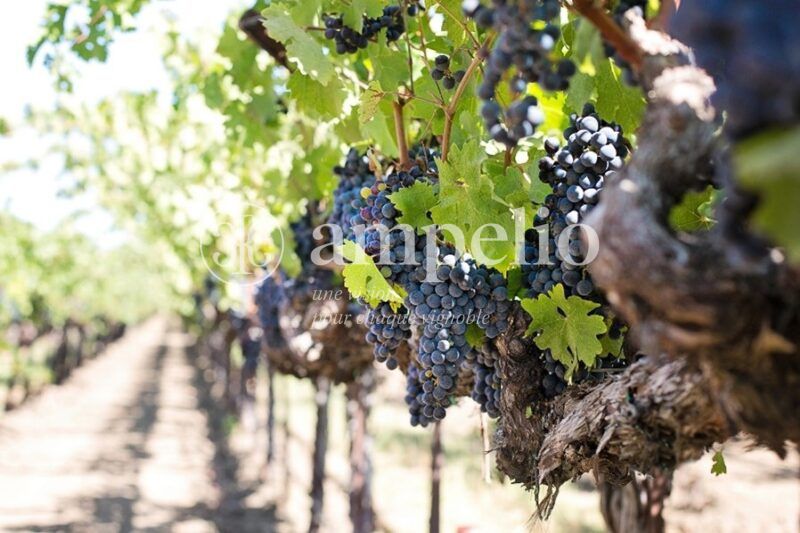
Key figures
- 11,417 hectares planted in the Loire Valley
- 1% of the region’s vineyards
- 2% of Cabernet Franc grown in France comes from the Loire Valley
History
Cabernet Franc is believed to have originated in the Spanish Pyrenees, before being brought into southwest France by pilgrims on the Camino de Santiago.
Later, Cardinal Richelieu introduced the grape to the Loire Valley, where it has since become the region’s dominant red variety.
Its local nickname, “Breton,” does not refer to Brittany, but rather to Abbé Breton, administrator of the cardinal’s estates in Saint-Nicolas-de-Bourgueil. He was the first to plant Cabernet Franc in the Loire, helping establish its lasting presence.
Regions
In the Loire Valley, Cabernet Franc is grown primarily in Anjou and Touraine.
In France, it is also widely planted in Bordeaux, particularly in the Médoc and Gironde.
Today, the grape has crossed borders and is vinified around the world: in Italy, Spain, Chile, South Africa, California, and beyond.
Characteristics
Cabernet Franc produces small, dark berries with bluish reflections.
It thrives on well-drained soils such as tuffeau limestone or clay-sandy terroirs.
The grape is renowned for its aromatic finesse, typically revealing red fruit aromas or notes of violet. Depending on the soil, it may also develop herbal and spicy nuances.
Loire Valley wines
In the Loire, Cabernet Franc is behind some of the region’s most celebrated wines: Anjou, Saumur, Saumur-Champigny, Touraine, Saint-Nicolas-de-Bourgueil, Chinon, and Bourgueil.
It also produces rosé wines, such as Cabernet d’Anjou, and even contributes to sparkling wines like Crémant de Loire.
2. SAUVIGNON
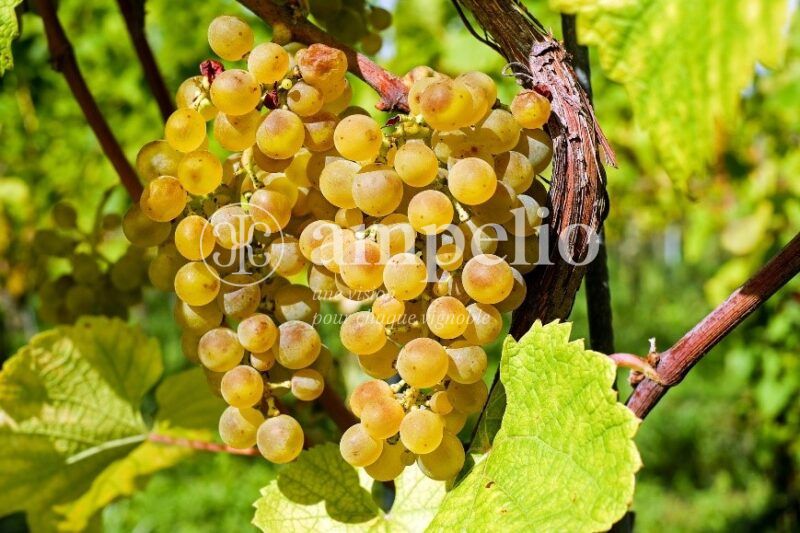
Key figures
- 10,094 hectares planted in the Loire Valley
- 9% of the region’s total vineyard area
- 3% of France’s Sauvignon is grown in the Loire
History
Sauvignon is one of the oldest French grape varieties, cultivated as early as Gallo-Roman times.
Its exact origins remain debated: some historians trace it back to Bordeaux, others to the Centre-Loire.
Unsurprisingly, each region proudly claims it as its own!
Regions
In the Loire Valley, Sauvignon has found its finest expression in the Centre-Loire, where climate and terroir allow it to reveal its full aromatic potential.
It is also widely planted in Touraine and in Bordeaux.
Internationally, New Zealand has become the world’s second-largest Sauvignon producer, renowned for crafting some of the best Sauvignon wines worldwide.
The grape is also grown in Australia, South Africa, Chile, the United States, and Italy.
Characteristics
Sauvignon offers an extraordinarily diverse aromatic palette, ranging from citrus fruits and white flowers to herbal notes, white-fleshed fruit, and tropical aromas.
Its expression varies significantly depending on the terroir. Sauvignon Blanc: golden-yellow berries with green highlights. Sauvignon Gris: berries with grey to pink hues
Loire Valley wines
Crowned as the king of the Centre-Loire, Sauvignon gives birth to some of the Loire’s most iconic appellations: Sancerre, Pouilly, Menetou-Salon, Coteaux du Giennois, Quincy, and Reuilly.
It also plays a key role in certain Touraine wines, offering freshness, precision, and remarkable aromatic intensity.
3. CHENIN
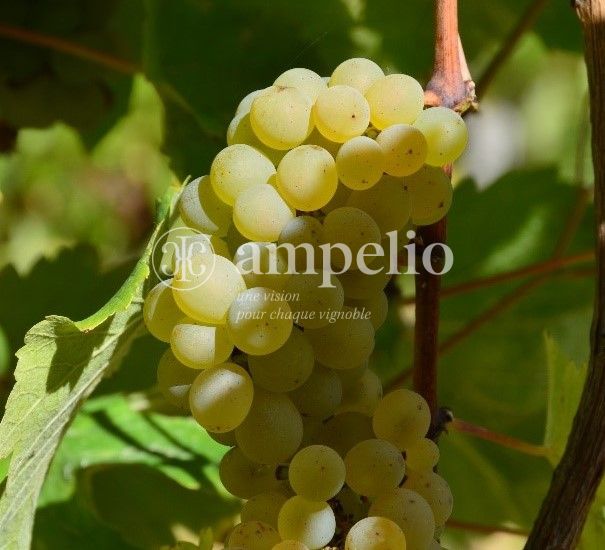
Key figures
- 9,540 hectares planted in the Loire Valley
- 15% of the region’s total vineyard area
- 93.3% of France’s Chenin is grown in the Loire
History
Chenin is believed to have originated in Anjou, with references dating back as early as the 6th century.
It later spread to Touraine, thanks to Thomas Bohier at the Château de Chenonceaux and his brother-in-law, the Abbot of Cormery, at the manor of Montchenin. Under the reign of François I, the two men introduced and cultivated different grape varieties from across France.
The name “Chenin” is thought to come from this Montchenin estate, a name later popularized by François Rabelais in the 16th century in his famous work Gargantua.
In 1685, after the Revocation of the Edict of Nantes, French Huguenots emigrated to South Africa, where they planted Chenin.
Regions
Chenin is the signature grape of the Loire Valley, particularly dominant in Anjou but also thriving in Touraine.
Today, however, its largest plantings are found in South Africa, where it is known as “Steen.” With more than 26,000 hectares, representing 30% of the country’s vineyards, Chenin has become a cornerstone of South African winegrowing.
Characteristics
Chenin is a white grape variety with small, round berries.
It thrives in the gentle Anjou climate and particularly favors chalky and stony soils.
Highly versatile, the grape adapts to its terroir, expressing local nuances in every bottle. In appearance, Chenin wines show a beautiful golden hue, with a bouquet ranging from floral and exotic fruit notes to peach. On the palate, sweeter styles reveal honey, candied fruit, vanilla, and caramel.
Loire Valley wines
Chenin is one of the most versatile grapes in the Loire, vinified into dry, off-dry, sweet, still, and sparkling wines.
Each appellation brings out a new expression of its character. It is found in some of the region’s most renowned wines: Anjou, Savennières, Jasnières, Vouvray, Montlouis, Coteaux du Layon, and Crémant de Loire.
4. MELON DE BOURGOGNE
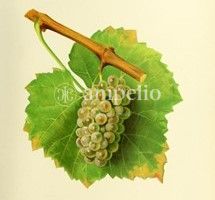
Key figures
- 8,327 hectares planted in the Loire Valley
- 1% of the region’s total vineyard area
- 9% of France’s Melon de Bourgogne is grown in the Loire
History
As its name suggests, Melon de Bourgogne originated in Burgundy. Today, however, it is grown exclusively in the Pays Nantais.
The grape is the result of a historic crossing between Pinot Noir and Gouais Blanc (a variety now extinct).
Already present in Burgundy and Loire-Atlantique during the Middle Ages, the grape truly flourished in the 17th century, thanks to Dutch merchants — great enthusiasts of white wines.
In 1709, a harsh winter struck France, with temperatures plunging to -20°C. While most vineyards were destroyed, the Melon de Bourgogne vines survived. Later, during the phylloxera crisis, it again proved its remarkable resistance. As a result, it spread throughout the region and became the defining grape of the Nantais landscape.
Regions
Melon de Bourgogne reigns supreme in Muscadet, where it accounts for 99.9% of plantings.
In the Centre-Loire, only 5 hectares remain.
And it is found nowhere else in the world.
Characteristics
Melon de Bourgogne has small, tightly packed, round yellow berries. Its name “Melon” refers to the round shape of its leaves, reminiscent of a melon.
It thrives in the oceanic climate of Muscadet, rooted in crystalline rock soils.
This is an early-ripening variety, making it the first to be harvested in the Loire Valley.
The wines show a pale robe with green highlights, offering great freshness and delicate citrus aromas.
Loire Valley wines
Unique in the world, Melon de Bourgogne is used to craft the wines of Muscadet, Muscadet Sèvre-et-Maine, Muscadet Côtes de Grandlieu, and Muscadet Coteaux de la Loire.
5. GAMAY
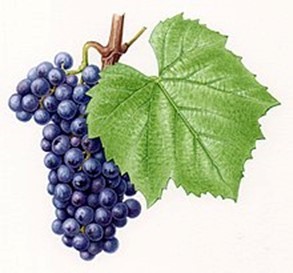
Key figures
- 4,197 hectares planted in the Loire Valley
- 6% of the region’s total vineyard area
- 2% of France’s Gamay is grown in the Loire
History
The origins of Gamay are debated: it may come from the Adriatic coast or from a small hamlet near Beaune named Gamay.
The grape was widely planted in Burgundy during the Middle Ages, valued for its high yields but criticized for producing wines of lesser quality compared to Pinot Noir. This tarnished Burgundy’s reputation, prompting Philippe the Bold, Duke of Burgundy, to decree in 1395 the uprooting of the “vile and disloyal Gamay,” banning it as far south as Mâcon.
Spared from this eradication, Beaujolais embraced Gamay, where it thrived on the region’s granite soils. The wines of Beaujolais gained recognition, and French winegrowers, including those in the Loire Valley, began cultivating the grape.
In 1999, genetic research confirmed that Gamay is the result of a crossing between Pinot Noir and Gouais Blanc, the same lineage as Melon de Bourgogne.
Regions
Worldwide, Gamay covers about 37,000 hectares, of which 34,000 are in France. It is most prominent in the Beaujolais, with 22,500 hectares, making it the region’s emblematic grape.
It is also planted throughout France, even making a comeback in Burgundy.
In the Loire Valley, Gamay is found in Anjou, Touraine, and Auvergne.
Characteristics
Also known as Gamay Noir à Jus Blanc, this grape has a striking contrast: its skin is deep violet-black, while its pulp is white.
Although naturally suited to red and rosé winemaking, the wines typically display a brilliant ruby color with vibrant red fruit aromas.
Loire Valley wines
In the Loire, Gamay is vinified in appellations such as Anjou Gamay, Touraine, Touraine-Mesland, Côtes d’Auvergne, and Saint-Pourçain.
CONCLUSION
Among the other great grape varieties of the Loire, we can also mention Chardonnay, Folle Blanche, Chasselas, Pinot Noir, Grolleau, and many more, all of which contribute to the incredible diversity of the Loire Valley.
The true strength of Loire wines, and indeed of French wines, lies in the perfect harmony between grape varieties, soils, and climate.
Each wine reflects not only the character of its terroir but also the expertise and savoir-faire of the winemakers who bring it to life.
At Ampelio, our work celebrates the balance between terroir, grape variety, and human expertise. Discover Ampelio’s values and commitment to the Loire Valley vineyards.
As a specialized vineyard agency in the Loire Valley, we accompany winegrowers, investors, and newcomers in turning their vineyard projects into lasting success stories.
SOURCES
https://www.vinsvaldeloire.fr/fr/interloire
https://www.vins-centre-loire.com/
https://www.vignevin-occitanie.com/
At Ampelio, our mission is to create the right match between a wine estate and its future owner. We place people at the very heart of our work.
In every transfer, our main concern is ensuring that the association is lasting, sustainable, and balanced — so that each party can thrive and find value in the project. The economic future of the wine estate is also a key element we take into account.
We actively support these transitions and dedicate all our expertise to serving each project.
Do you have a question about selling or buying a wine estate?
Our team will be delighted to discuss your project with you and answer all your questions.
Ampelio brings over 10 years of experience in supporting and advising on wine estate transactions in the Loire Valley.
